The ASHI Standard of Practice for Home Inspections requires home inspectors to report on components near the end of their service lives. To figure this out, we need to determine the age of appliances such as water heaters, furnaces, air conditioners, and boilers. Once you know where to look, it’s usually quite easy to find this information. Start by bookmarking https://www.building-center.org/. I’m pretty sure this is the go-to website for every home inspector in North America. Next, find the appliance tag.
Water Heaters
The data plate for water heaters is always right on the front. Many water heaters have the date of manufacture clearly indicated, like the one below.
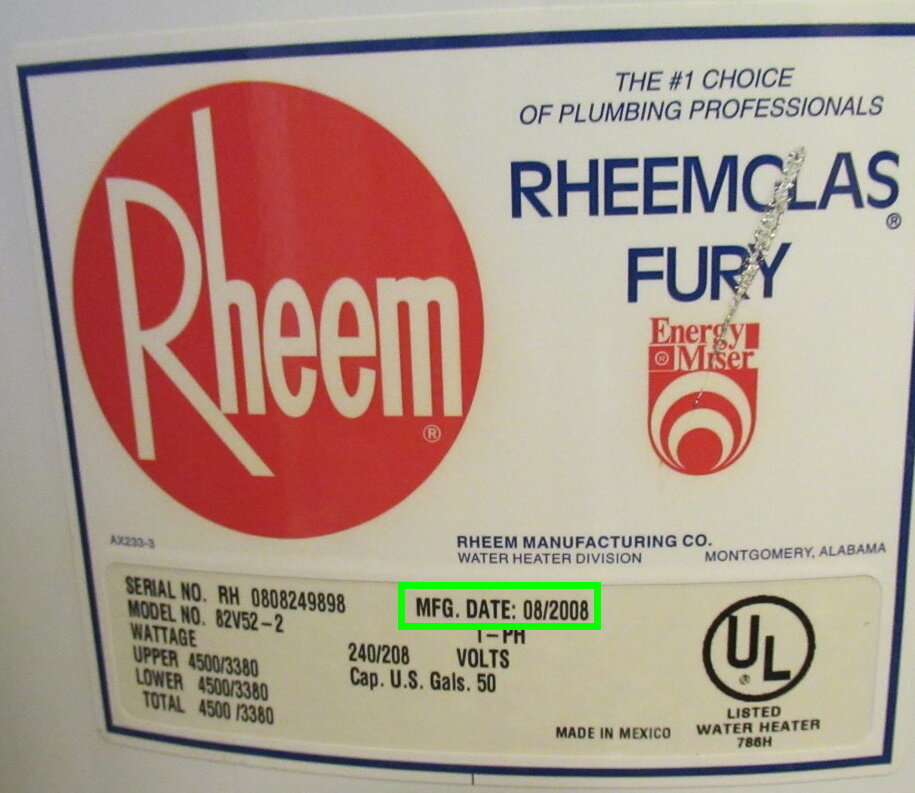
Even if the date of manufacture wasn’t listed here, I could look at the serial number for a good clue. It starts with 0808, which indicates 08/2008. For gas water heaters, there’s always an ANSI standard listed, and the year of that standard is typically 2 to 4 years older than the water heater itself. Look for some numbers in the serial number that would make logical sense. For example, the water heater below has an ANSI year of 1998, and the serial number has 1000 at the beginning, which means it was manufactured 10/2000.
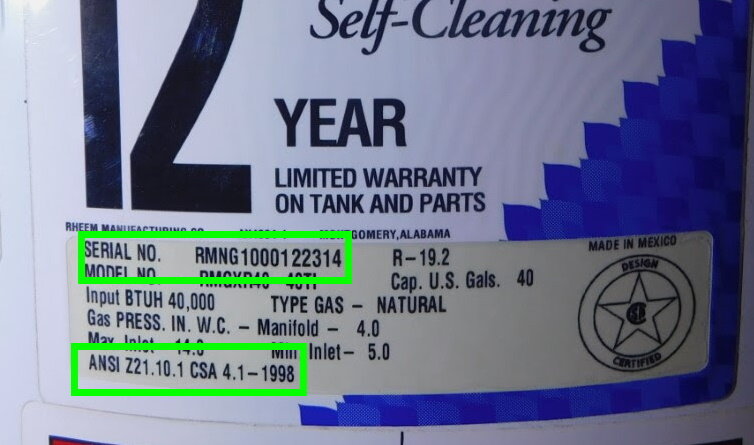
Unfortunately, not all water heater manufacturers make it this easy. For example, Bradford White uses a letter code in their serial number to indicate the age.
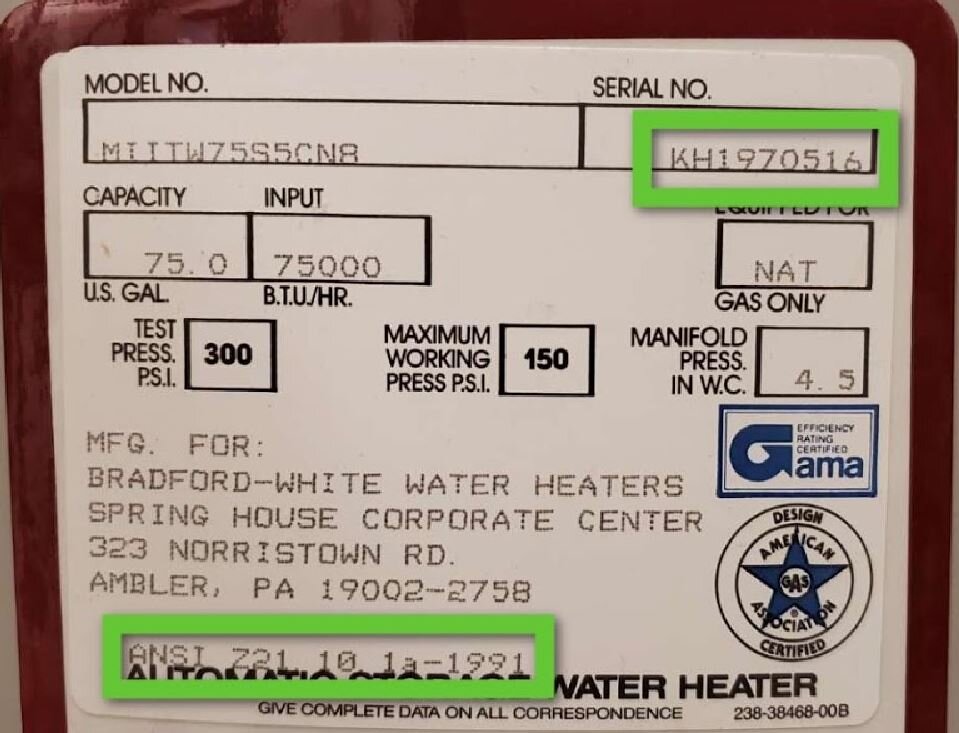
Based on the ANSI number, I’d estimate this water heater to be a 1994. But if I wanted to be sure, I’d head on over to Building-Center to use one of their secret decoder charts, which would have this information:
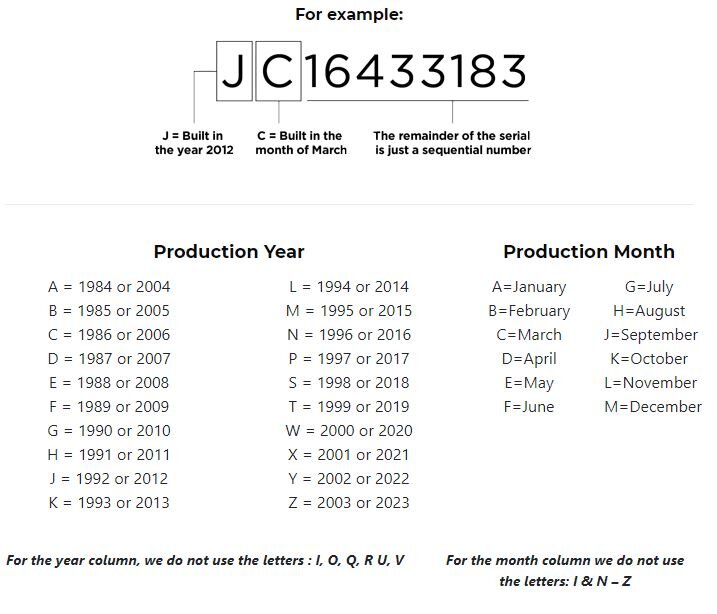
Every once in a while, the data plate will be covered by insulation, which violates the manufacturers instructions. You can usually find the data plate by pulling the insulation blanket down a little, but don’t damage the insulation.
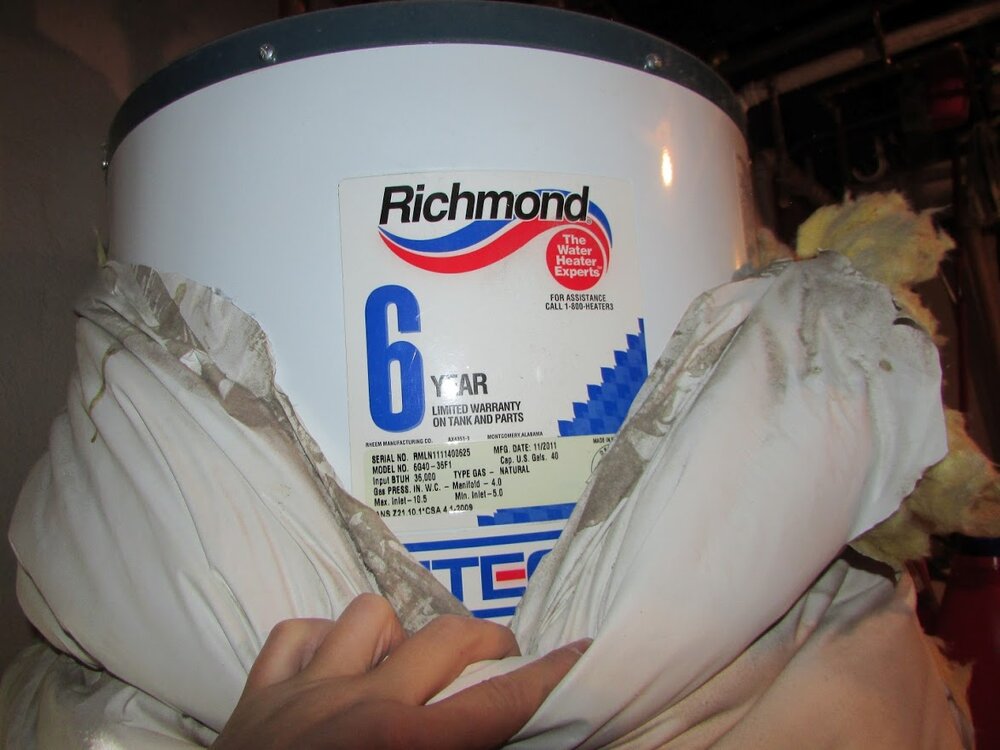
Furnaces
To find the data plate on a furnace, you usually have to remove the front cover. Most just pop off, but every once in a while you’ll need to remove a pair of screws to get it off. Once removed, take a look inside the furnace cabinet. There’s usually a label on the side or bottom of the upper compartment. Every once in a while, the manufacturer will be sneaky and put it on the panel you just removed. If you can’t find it, look harder. It’s always there.
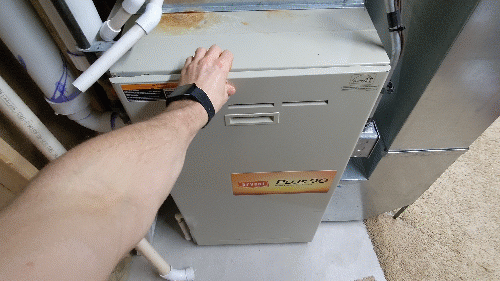
Once you’ve found it, follow the same advice I gave above for gas water heaters. Sometimes the age is clearly indicated, the ANSI standard gives you a clue, and sometimes the age is contained within the serial number. When all else fails, head to Building-Center and use their decoder for the serial number of the equipment.
Boilers
The data plate for boilers is usually found inside the unit, and you usually have to remove a cover, just like you do for furnaces. Look for an ANSI standard, and assume the boiler is about 2 to 9 years older than the ANSI standard. Boilers are always the most challenging appliance to determine the correct age. Take for example, Weil-McLain boilers. They put a separate label on their boilers with a “CP” number.
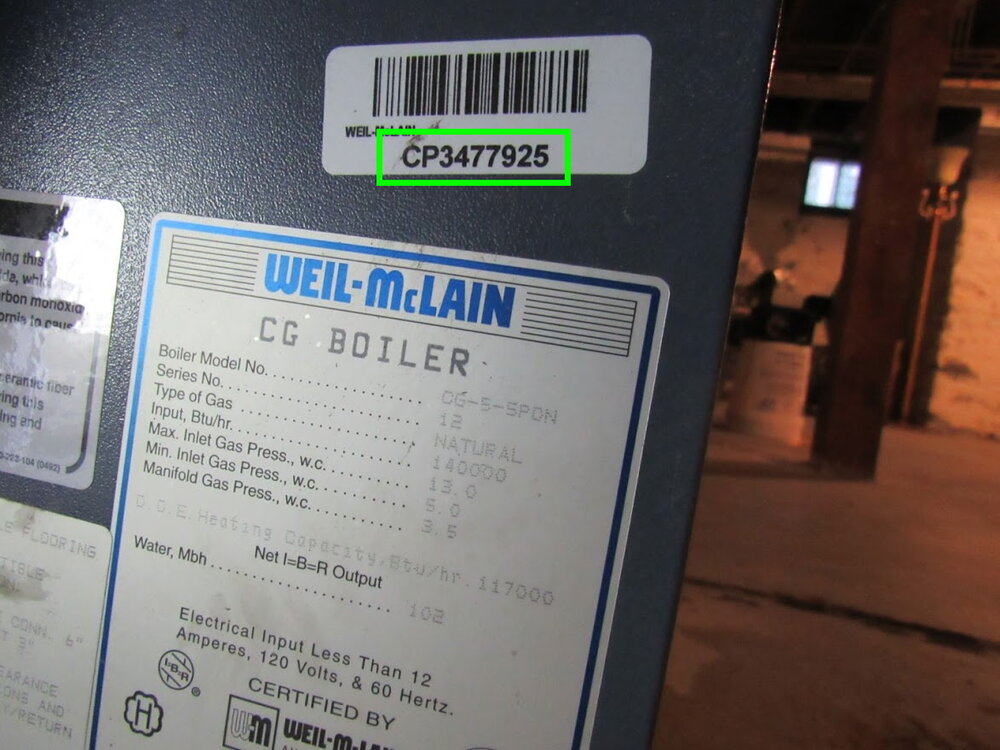
Once you have that, Building-Center gives a link to Weil-McLain’s lookup tool, where you enter the CP number on their website to find the age. This particular boiler was manufactured in 1998. Slant/Fin, on the other hand, doesn’t have such a feature on their website. To figure out the age of those boilers, we have to make a phone call to Slant/Fin directly.
Air Conditioners
The data plates for air conditioners are usually on the back of the unit, fairly close to where the refrigerant lines enter the unit. If you can’t find it, keep looking. It’s there somewhere. Sometimes you have to lay down on the ground or crawl between the house and the unit, but it’s surely there. The sun and outdoor elements aren’t always nice to these labels, however.
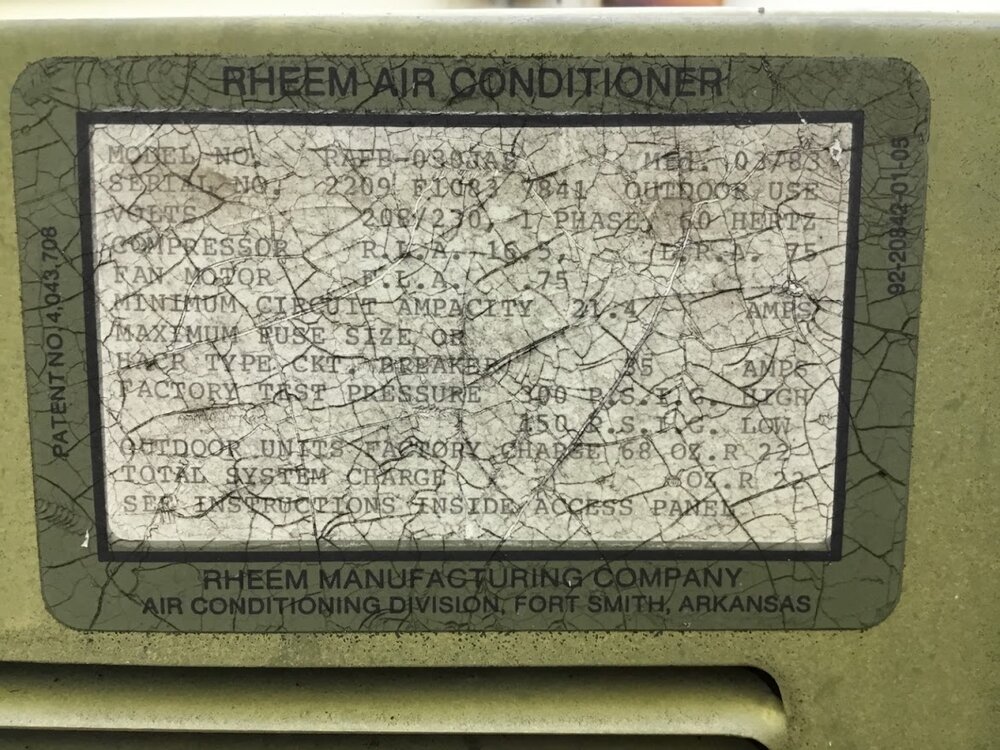
Once you’ve found the data plate, either look for a date of manufacture or the serial number, and again, head on over to Building-Center. And while you’re at it, consider making a donation to their site. It’s run by a couple of guys who provide an extremely valuable resource to the home inspection community.

